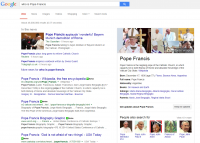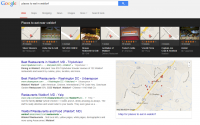
If you thought that organic placement was all about keyword density you’d be right on one count, it is the keyword but no longer the density; search engines are just too smart to accept spoon-fed content.
Welcome to the world of advanced keyword tactics and how search engines are using them today.
1. It’s no longer density or repeating keyword phrases in your content, it is about natural language and keeping one page on one topic. The actual terms are TF-IDF (term frequency – inverse document frequency) and semantic distance and term relationships. What this means if that Google understands what your entire website is about by reading all your pages. They understand synonyms and the phrases that you use. This makes it key to organize your website into smaller blocks of content; stick with one topic per page. Not only will this work better for search engines, but mobile users will love you too.
2. Page segmentation is important. Understand that what you put in sidebars, navigation, headers and footers is less valuable for Google ranking that what you put in the page’s main body content. Help Google to understand your page’s content better by using only one H1 tag per page and breaking the content into subheadings and bulleted text sections. Know that your main theme should be mentioned in the first sentence, or at least the first paragraph, so that Google understands clearly the importance of your terms or concepts. Write with style, following the guidelines of using an introduction, body, and conclusion when you create your content.
Even if your page has been crafted to these specifications, there are off-site factors that will impact where you appear in the search rankings, number of links, number of links from authority sites, and relevancy of your content to the user’s search query, just to name a few. Google has over 200 signals that it evaluates as part of positioning your website in the organic search results; some are known and some are not.
The first step is to build the best content-informative site you can that answers questions that readers would want to know about your products and services.
If you need help identifying areas of opportunity for your site, I offer a paid site evaluation and report. Use my experience to create a roadmap to identify areas of opportunity for your website as you plan to position it in the organic results.




